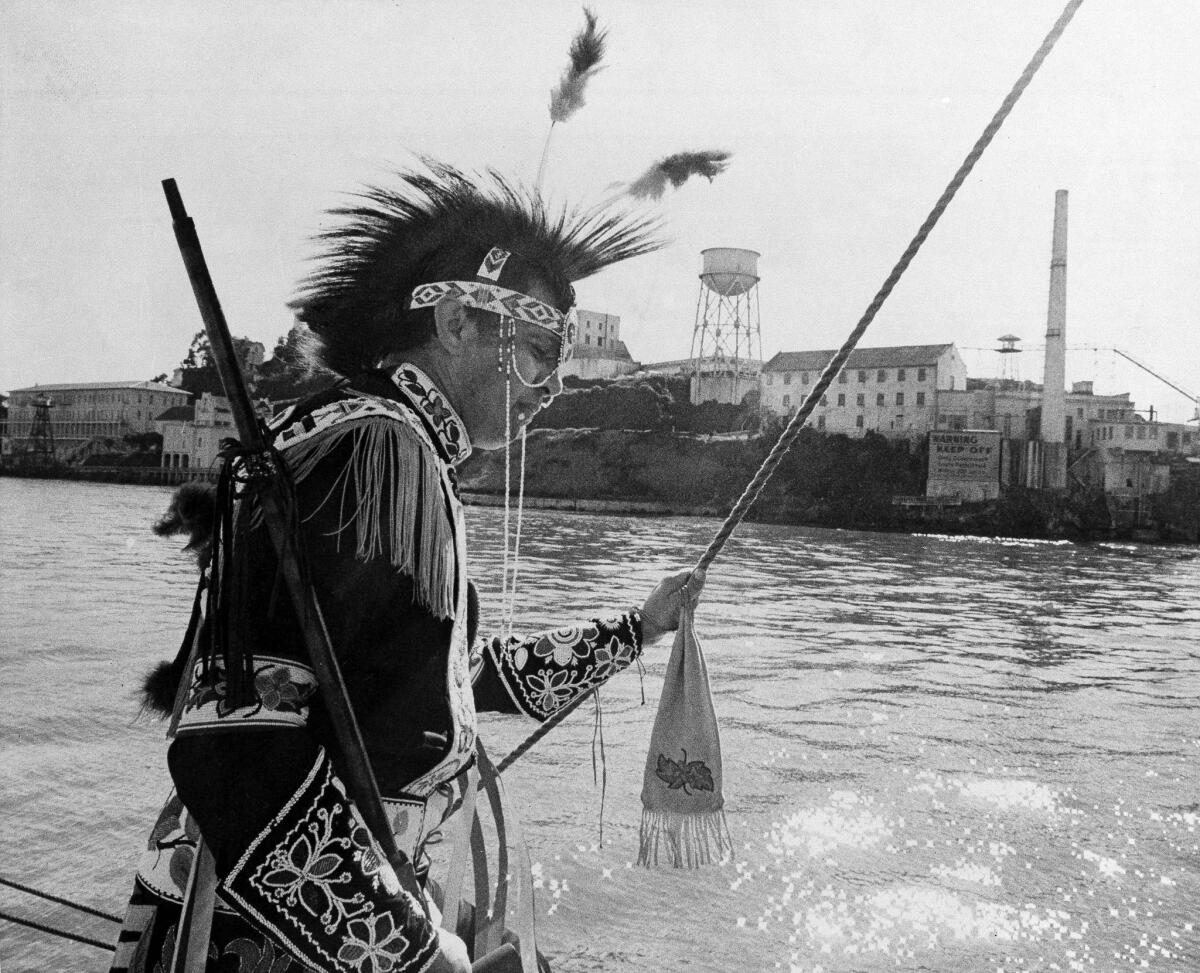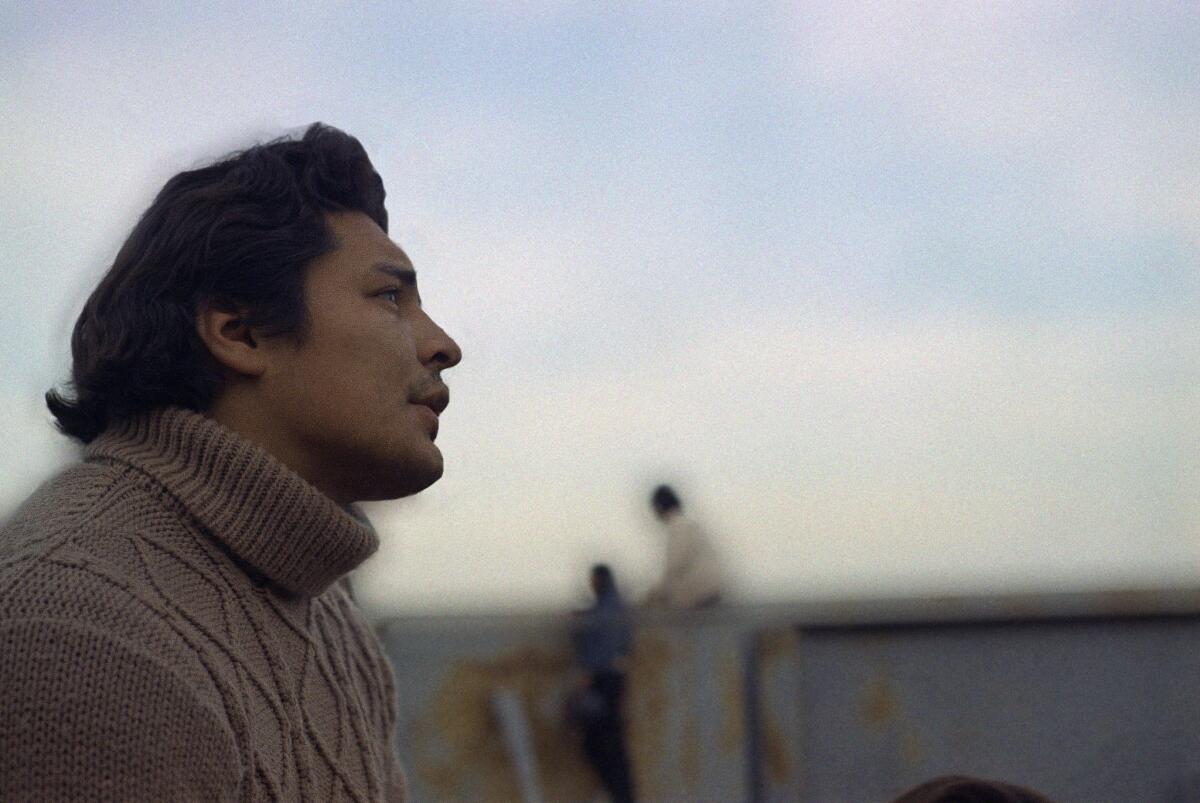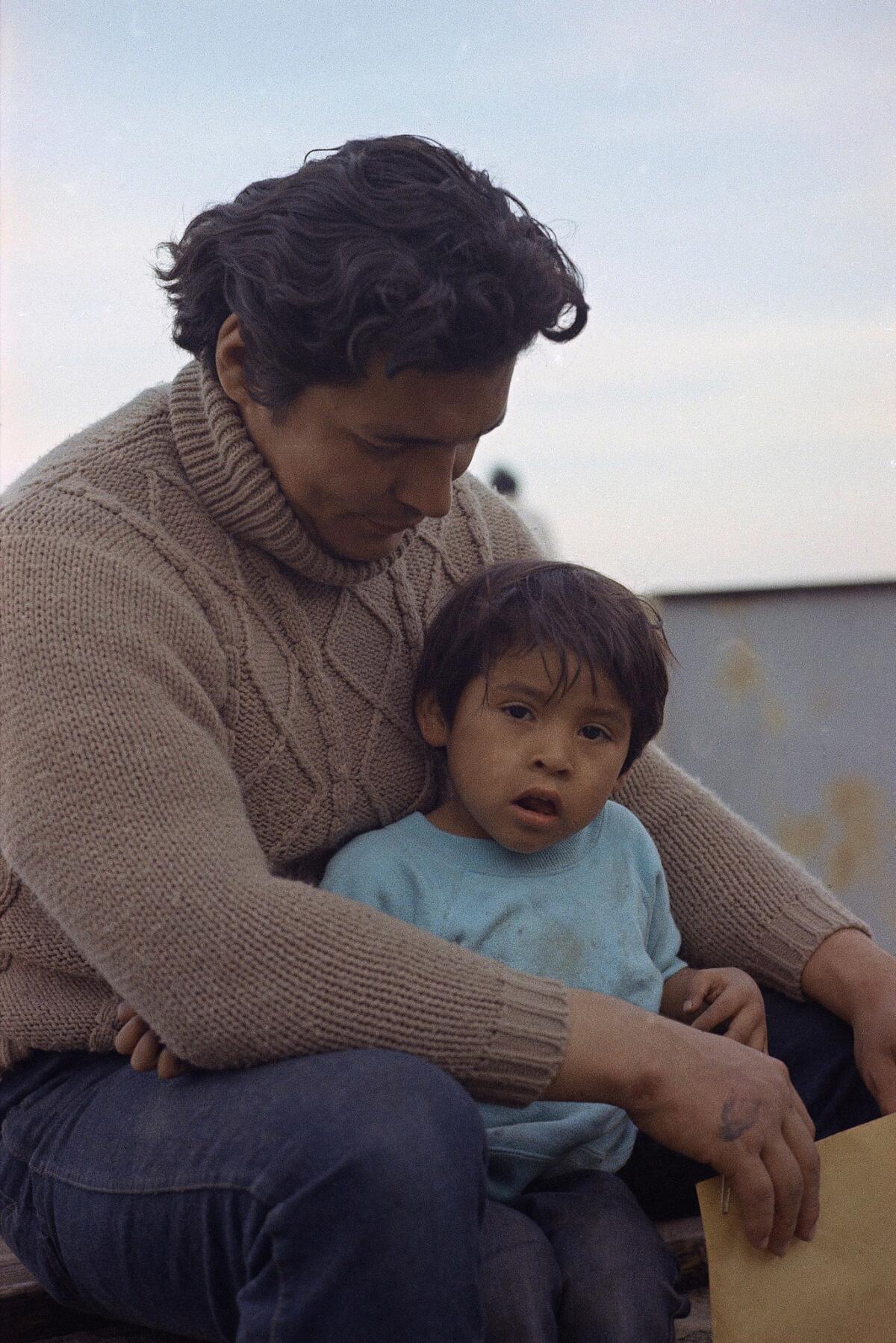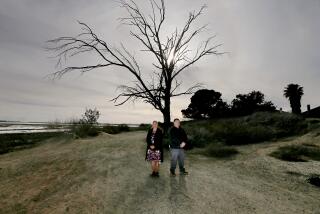Richard Oakes led Native Americans to occupy Alcatraz in 1969 — his tragic story is finally being told

The 1969 occupation of Alcatraz Island in San Francisco Bay is one of the most notable acts of political resistance in American Indian history. In Kent Blansett’s latest book, “A Journey to Freedom: Richard Oakes, Alcatraz, and the Red Power Movement,” he captures the action as it happened: “Dressed in blue jeans, a sweater, and a cherished pair of cowboy boots, Richard Oakes made his way to the side of the boat. Looking over at the waves and the island, he turned to the crowd and motioned, ‘Come on. Let’s go. Let’s get it on!’ Within a few seconds, his shirt was off; his large frame disappeared into the chilled November waters, his boots still on as he swam for the land.”
In the turbulent but transformative civil rights era, the Red Power movement was the American Indian version of what became multiple ethnic nationalist movements that sprang up in the 1960s and ’70s. Inspired by the Black Power movement, which fostered ethnic pride and Black social empowerment, the Red Power Movement led to sea changes in federal Indian policy, resulting in the affirmation of sovereignty and self-determination for tribal nations after centuries of physical and cultural genocide at the hands of Euro-Americans.
One of the most important movers and shakers of the Red Power era was Richard Oakes, who led the occupation of Alcatraz Island. Despite the fact that Oakes passed away in 1972, “A Journey to Freedom” is the first ever biography of his life.
Civil disobedience occupations like Alcatraz were a cornerstone of 1960s and ’70s social justice activism, especially in Indian country.

Much has been written about the Red Power movement often revolving around the American Indian Movement and some of its higher profile personalities such as Russell Means, Dennis Banks and others. AIM is often associated with a more militant approach to political activism, such as the 71-day armed siege of Wounded Knee in 1973. But while AIM and Red Power emanated largely from urban (as opposed to reservation) Indian youth, AIM was only one aspect of a larger Red Power movement. Much of the era’s activism, in other words, had nothing to do with AIM. And Oakes was not formally affiliated with AIM either.
Blansett’s biography was 18 years in the making from when he first became interested in Richard Oakes’ life as an undergrad at the University of New Mexico. His meticulous research pays due respect to Oakes’ massive contribution to the Red Power movement but avoids the hubris of hagiography by understanding Oakes as a flawed individual who could be polarizing and difficult.
Although the book is published by a major university press, it is not bogged down by academic jargon and inaccessible prose. Blansett’s balanced writing combines with copious photos and maps that bring the story to life, making this book available to the average reader while it simultaneously fills a void in the Red Power historical literature.
Oakes was most known for leading the occupation of Alcatraz, an action that is often, although somewhat misleadingly, thought of as the genesis of the Red Power movement. Civil disobedience occupations such as that at Alcatraz were a cornerstone of 1960s and ’70s social justice activism, especially in Indian country.
Relocation was sold as a way for Indians to escape federal ‘supervision’ of reservation life where poverty was rampant.

The abandoned prison island of Alcatraz had become a target for occupation based on the belief that the 1868 Treaty of Fort Laramie allowed for the reclamation of unused land, and a plan was drafted to turn the island into an American Indian cultural center. But by the time Alcatraz happened in 1969, there had already been numerous other direct-action campaigns in various tribal communities, all based on the assertion of treaty rights, self-determination and returning land.
One well-known example is the occupation of Frank’s Landing in Washington State in protest of state fishing laws that violated treaty rights. It had attracted national media attention due to the involvement of celebrities including Marlon Brando and Dick Gregory. But while the “fish-in” began in 1964, it was by no means the first organized protest in Indian country.
In the genealogy of 20th century American Indian activism, Blansett traces the origins of Oakes’s own political engagement to his Mohawk roots in New York, where his home community at Akwesasne on the U.S. side of the international border and Kahnawà:ke Mohawks on the Canadian side had been fighting the building of a massive canal on the St. Lawrence River since the early 1950s, which resulted in the confiscation of much of their land. Oakes was a kid when his family was fighting that battle and was deeply influenced by it.

The urban grounding of the Red Power movement is often framed as “pan-Indianism,” an older term originating in the early 20th century when Native people increasingly integrated into cities. But Blansett argues that the term is wrong because it implies that Native people gave up their tribal identities in favor of a more ambiguous “Indian” or “Native American” identity.
Instead, Blansett contends that Native people brought their tribally based national identities with them, resulting in what can more accurately be understood as intertribalism. Blansett writes: “Intertribalism centers on the power of place and the Native Nationalist definitions of shared culture.”
It was the amalgamation of many different Native “nationalisms” that resulted in what he calls “Indian cities” in places such as San Francisco, Seattle and Brooklyn, where Oakes grew up. The federal relocation policy of the 1950s was designed to empty reservation communities and had resulted in tens of thousands of Native people moving to cities, where they found each other and together built intertribal communities that reinforced their respective tribal identities.
Relocation was sold as a way for Indians to escape federal “supervision” of reservation life where poverty was rampant. Like many Mohawk and Iroquois people, to escape the poverty of reservation life, the Oakes family moved to Brooklyn, where life was a different kind of rough. The parents’ divorce resulted in Oakes and his brother living in an orphanage for a couple of years. As a teenager and young adult, Oakes had altercations with the law.
In New York City, Mohawks were famous for their death-defying construction work on skyscrapers and bridges. The risky ironworking jobs were well-paying, and Oakes followed in his father’s footsteps, dropping out of high school to become an ironworker. Eventually he went back to school, however, and after a short-lived marriage, Oakes found himself needing to rebuild his life.
Oakes left New York in 1968 for San Francisco, where revolution was in the air. He landed in the Indian city of the Mission District where he immediately became involved in political organizing as a student at San Francisco State College.
Owing to Oakes’ leadership, the Alcatraz occupation began in November of the following year. By then he had married a Kashaya Pomo woman named Annie Marrufo who brought several children with her into the marriage. Their 10-year-old daughter Yvonne had died in a mysterious accident just a few weeks into the occupation, and the Oakeses decide to leave the island.
The assassination was perceived by American Indian activists as just one more in a long line of injustices

After Alcatraz, Oakes’ political work kicked into high gear and he organized many other direct-action campaigns in Indian country. Settling in Marrufo’s home community on the Stewart’s Point Rancheria in Sonoma County, he embroiled himself in local Native conflicts with non-Natives, raising the ire of white ranchers.
In September 1972, Oakes was murdered in a confrontation with one of the ranchers in what Blansett characterizes as an assassination, since the murder was a direct result of Oakes’ political activism. After a short jury trial, Richard’s killer was found not guilty of murder.
The assassination was perceived by American Indian activists as just one more in a long line of injustices, sparking outrage and leading to a cross-country caravan to take over the Bureau of Indian Affairs building in Washington, D.C., later that year, known as the Trail of Broken Treaties.
Richard Oakes’ organizing successfully resulted in the return of land for Native people, including the Pit River tribes in Northern California, Fort Lawton in Seattle (which was turned into an urban Indian center), and others. Today’s tribal relationships with the federal government are based on the recognition of mutual sovereignty, stemming in no small part from the activism of the Red Power Movement and Oakes’ leadership. The recognition of his legacy is long overdue.
::
“A Journey to Freedom: Richard Oakes, Alcatraz, and the Red Power Movement”
Kent Blansett
Yale University Press, 392 pp.
More to Read
Sign up for our Book Club newsletter
Get the latest news, events and more from the Los Angeles Times Book Club, and help us get L.A. reading and talking.
You may occasionally receive promotional content from the Los Angeles Times.






